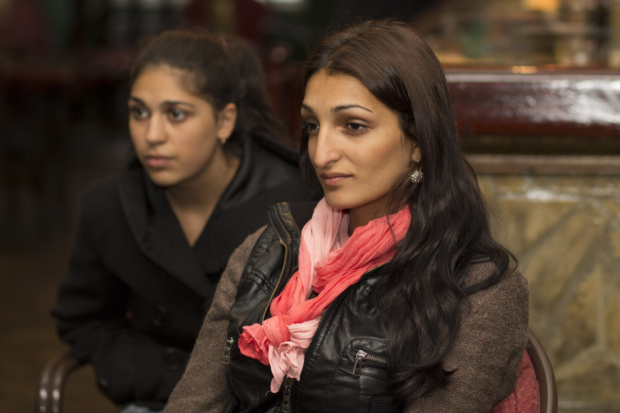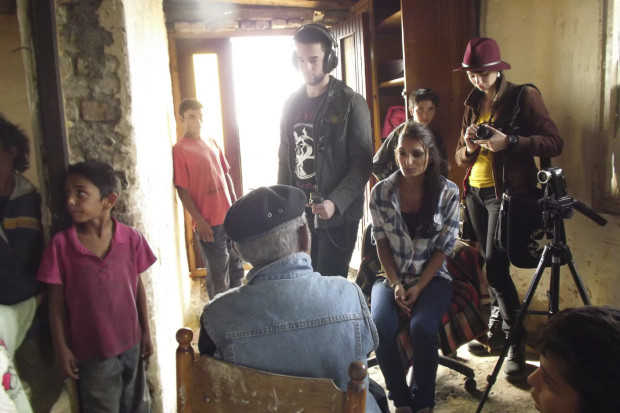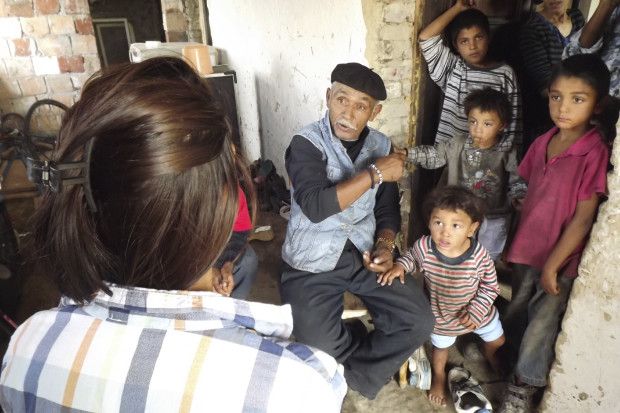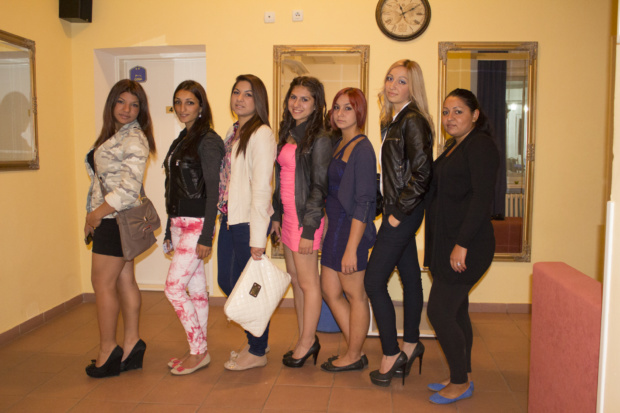By Valery Novoselsky
Roma Virtual Network
Photos: Buvero Serbia Project
The Growing Power Of Electronic Mass Media
The influence of media on modern humanity affects people`s attitudes, sympathies, antipathies and motivation to act. The information and images brought into our homes and even cell phones, tablets, iPhones on every-minute basis are shaping perceptions about the world and inseparable from cultural, ethnic, religious and social issues. We are all affected by the electronic mass media and its capacity to influence us. Our attitudes are cultivated primarily by what we watch on television, listen on radio, read in newspapers and what we watch, listen and read on-line. All these tools are already used by the “opponents” of Roma, but we have these tools too. A lot depends from our skills in producing and delivering of truthful information, from the harmonic cooperation with friendly non-Roma media and from the art of balanced and legally-correct polemics with the “opponents”.

Negative stereotypes will not change unless different information about the other concerned group appears so much so that people will have to reconsider the previous opinions. Negative stereotypes are at the heart of intolerance and are reflected in discriminative attitude towards other groups of people. That`s why the dissemination of stereotypes concerning ethnic minorities by the mass media have a direct effect on people’s views on these minorities and consequently results in either positive or negative behavior towards them.
On the other hand, as today’s mass media have become more consolidated, politically-correct (at least, on a surface) and reach out to a larger audience, and many of them formally condemned the explicit diffamative approach, the media market has proved to be an effective instrument for reducing open forms of racism and xenophobia. Nevertheless, new sophisticated forms of hate propaganda have developed through the various media channels, especially electronic ones. It is the case with anti-Gypsism, anti-Islamism and anti-Semitism in today`s European Union. As a consequence, in the work promoting racial and religious equality and combating xenophobia, the media seem to be both friend and enemy for the Roma and other minority communities.
 Addressing Media Stereotyping
Addressing Media Stereotyping
Stereotypes are unavoidable, especially in the mass media, the area which needs as more spectators as possible to quickly understand the information. Stereotypes act like codes that give audiences a quick and general perception of a person or a group of people – usually relating either to their ethnicity or race, gender, religious or social background.
Stereotyping is a mental process that helps the people identify with their own ethno-cultural group by involving usually simple and hyper-generalized assertions about members of other categories, thus providing a sense of belonging. Stereotypes are an essential part of our public life because they save people`s mental energy when making the judgments of others.
Fairly often, the groups being stereotyped still have little to say through mainstream (i.e. majority) media channels on who they really are and how they are represented. That`s why one of the main responsibilities for the ones who work in Roma media is to challenge common (usually imprecise and misleading) stereotypes and to challenge the root causes of biased portrayals. Any external stereotyping impacts not merely mainstream opinion, but self-image as well, especially it affects the attitudes among the young Roma toward their own ethnicity.

Consequently, present situation requires the enormous efforts to counter media stereotyping with alternative media projects, especially via digital social networks. It also requires the diversity guidelines for the mainstream media, as well as official policies to promote fair and equitable descriptions of Roma on all levels of media (whether national or pan-European).

Roma Representations And Racism In The Mass Media
The way many media outlets report on Romani people contributes to an enormous extent to creating and shoring up negative attitudes and prejudices toward Romani people. Another feature of the current media scene is a low level of willingness to provide space to Romani people themselves. It seems that the electronic media (as a part of all mass media) are still reproducing prejudices via the content of reporting, the roles distributed to minority spokes-persons, and the oversimplification of minority issues. Very often there is over-emphasis on ethnic crime and especially in headlines, links are established between the ethnicities and the criminal behaviour of their representatives. This is the case also when media talk on numerous social problems of minority, thus stregthening the stereotype that this ethnic group is socially problematic and marginal.
One group that is invariably depicted in a dark light by the electronic media across Europe is the Roma community. Majority of polls held in EU have shown without any doubt, that a very large majority of the European population has historically strong anti-Romani feelings. The news usually focuses on problem areas and has an obvious tendency to reinforce traditional stereotypes about Roma, which are widespread. There is also a fundamental difference that makes the Roma case much worse than of any other ethnic minority in Europe. The issue is not simply that the Roma refered to as a social problem or, at best, as tokens for entertainment and decoration. It is also typical that anti-Roma public hate speeches on many levels often pass with impunity. Declarations demonizing the Roma are not espoused merely by fanatics, but also by public personalities. Such declarations, communicated by the mass media, make blatant human rights violations against Roma acceptable in the eyes of the mainstream society and result in complete tolerance for extreme expressions of anti-Roma racism in the media, thus, gradually leading to such expressions in real public life.
Taking a look at today’s mainstream European media, one can hardly find any Roma, neither in the popular newspapers, nor in the electronic media, nor in the leading television companies, nor among the editors-in-chief or star television presenters. If a caring and likeable representation of a nearly 12 million strong and the most negatively portrayed European minority, would not take place, then integration goals, societal change, cohesion and the image of a more open society will remain the illusions.
The Attitude Change With The Help Of Media
After the collapse of totalitarian regimes in Central and Southeastern Europe and the
accession of most countries from the region to the European Union gradually Roma issue became topical for Europe. This was a logical consequence of a surge of anti-Roma attitudes in public space and media.
In frames of the European Union accessions process for most countries in the region a prerequisite became an active national policy for solving the problems of Roma and for democratization of the media environment, and adapting of anti-racist discourse. The democratization process flows unevenly across the countries, but today it can largely be considered complete and in the state policies and the media environment in regard of Roma dominates today (at least formally) anti-racist discourse.
Intolerance leads to negative stereotypes, but direct inter-group contact can be a helpful approach to reducing it. Under appropriate conditions, interpersonal contact is one of the most effective ways to reduce prejudice between majority and minority group members.
One of the most striking characteristics of today`s electronic media is that they give the illusion of face-to-face relationship with the performer. Thus, parasocial interaction forms become the mass mediated equivalent of interpersonal communication. It became possible that parasocial communication is able to influence attitudes about certain groups in a manner consistent with the influence of live intergroup contact. Thus, the media (especially digital ones) can be seen as an ultimate source of images that can stimulate belief changes concerning stereotypes.
Addressing this trend, Roma media should do the best in shaping their own activities and linkage with mainstream media in a constructive way, by:
– integrating information on the positive contributions made through the history by Roma individuals and communities into the life of countries they live in,
– representing Roma as self-motivated and able to change their problems, not merely the recipients and subjects of mainstream measures,
– challenging the “exotization” of ethnicity with truthful and in-depth information on Roma life, culture and history.
It became very frequent these days that one can learn about a minority group from mediated messages and presentations. And if one has an experience he perceives as positive, one’s behavior is altered and this person is normally will seek out additional contact rather than avoid it. Given the importance that positive representations of Roma minority could have on prejudicial attitudes and discriminative practices, and the positive effect these kind of portrayals could thus have, such established approach will strengthen the process of social cohesion in Europe.
Roma media and the mainstreaming strategy through the electronic media
Despite the unfriendly background, there are certain long-termed local, national and international initiatives, which have resulted in improvements in the representation of Roma in the mass media, at least concerning the topics they are associated with. Among this initiatives we can recognize the long-term activities of such Roma media entities as Romea (Czech republic), ERIO Network (Belgium), Romedia Foundation (Hungary), Mesem (Slovakia) and Union Romani (Spain).
The lesson learned from the efforts to shape media activities is that concrete positive initiatives are initiating a process of change. By presenting the work of Roma intellectuals, activists, ordinary people busy with their usual duties, we can challenge mistaken and stigmatizing allegations that portray the Roma as a marginal social group, rather then ethnicity.
Media products about the Roma should therefore systematically present a balanced range of presentations, to reach as widest audience as possible, to impart accurate information free of biased views. Roma journalists have to play a stronger role in this struggle amidst modern information society since there could possibly be no better example to set than their individual work and outstanding intellectual and imaginative standards regarding visual representation. The success of these projects depends from the ability of Roma to advance own image-making and cooperation with the mainstream media, to reach wide audiences and to shape conceptions about the Roma. Romani audiences must be able not only to recognise themselves in the mainstream media, but also be introduced with information about the diversity and unity of Romani people.
The presentation of successful role models, such as artists, cultural leaders, political activists making their mark across the world can be a driving force reinforcing social action, community accountability and self-organisation being a basic means for improving the social status of Roma communities.
Roma media need stable support!
Given the growing difficulties Roma journalists face in their everyday work, struggling for financial resources is a matter for a constant struggle for survival. In the light of the years of the Decade for Roma Inclusion, it is impossible to ignore the prominent role of the Roma media, which were and still are the only providers of concrete and insightful information.
Support for conceptualized and sustainable Roma media initiatives is therefore fundamental and considerable resources in the framework of the EU Structural Funds can be mobilised to implement respective policies up to year 2020 and further. The issue is not limited to promoting of attitude shifts in the average European viewer, but extends to the proportionate and dignified representation of approximately 12 million European Roma citizens who are still the subject to the worst stigma in Europe, but who are dynamically working on improvement of their own situation.
Sources:
Barsony, K., Kurucz, M. “Media, Power and strategies – Shaping Attitudes towards Roma through the European Mass Media.” Romedia Foundation. 26 September 2007.
http://romapage.hu/hircentrum/article/113434/1597/
European Roma Summit (Brussels, 16 September 2008)
http://tinyurl.com/knh8qo
Marushiakova, E., Popov, V. “New Trends of Antiziganism in Central and Eastern
Europe.” – In: Kyuchukov, Hristo and Omar Rawashdeh. (Eds.) Roma Identity and Anti-Gypsyism in Europe. Munchen: LINCOM, 2013, 183-194.
https://www.academia.edu/5044652/New_Trends_of_Antiziganism_in_Central_and_Southeastern_Europe
Marushiakova, Е., Popov, V. “The Roma between the Scylla of Marginalization and the Charybdis of Exotization.” – In: Social and Cultural Diversity in Central and Eastern Europe: Old Factors and New. Prague: Multicultural Centre, 2005, 6-9.
http://tinyurl.com/nvfml6


